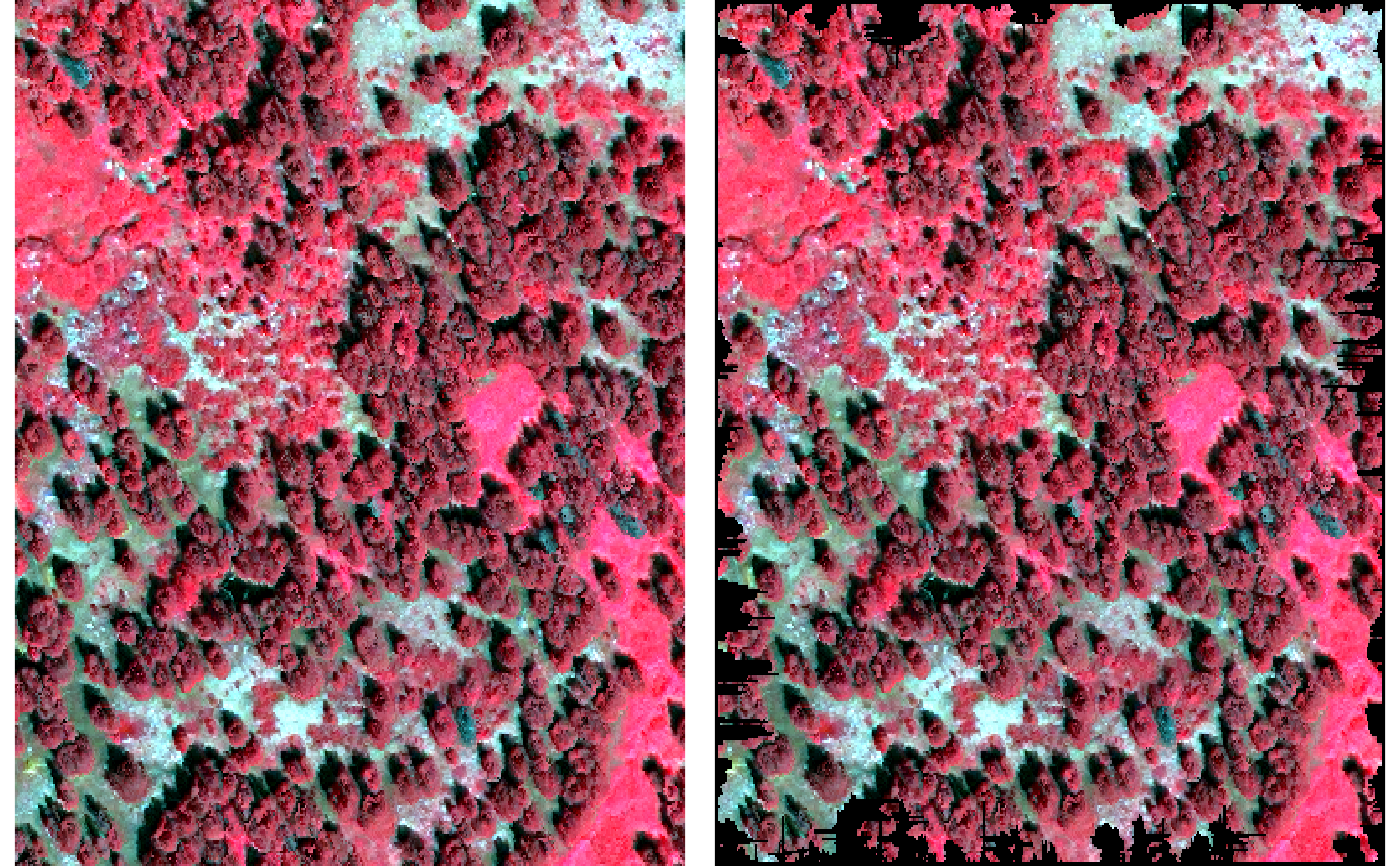This function provides an interface mirroring that of the GDAL
command-line app nearblack. For a description of the
utility and the arguments that it takes, see the documentation at
https://gdal.org/programs/nearblack.html.
Usage
nearblack(
infile,
o = infile,
...,
of,
white,
color,
near,
nb,
setalpha,
setmask,
q,
co,
config_options = character(0),
dryrun = FALSE
)Arguments
- infile
Character. Path to a GDAL-supported readable datasource.
- o
Optionally, a character string giving the path to a GDAL-supported output file. If not supplied, defaults to codeinfile=, indicating that the input file should be modified in place.
- ...
Here, a placeholder argument that forces users to supply exact names of all subsequent formal arguments.
- of, white, color, near, nb, setalpha, setmask, q, co
See the GDAL project's nearblack documentation for details.
- config_options
A named character vector with GDAL config options, of the form
c(option1=value1, option2=value2). (See here for a complete list of supported config options.)- dryrun
Logical (default
FALSE). IfTRUE, instead of executing the requested call to GDAL, the function will print the command-line call that would produce the equivalent output.
Examples
# \donttest{
td <- tempdir()
a_rast <- file.path(td, "a.tif")
b_rast <- file.path(td, "b.tif")
file.copy(system.file("extdata/tahoe.tif", package = "gdalUtilities"),
a_rast)
#> [1] TRUE
file.copy(system.file("extdata/tahoe.tif", package = "gdalUtilities"),
b_rast)
#> [1] TRUE
nearblack(a_rast, b_rast, of = "GTiff", near = 150)
## Check that it worked
if(require(terra)) {
op <- par(mfcol = c(1, 2))
r1 <- plot(rast(a_rast))
r2 <- plot(rast(b_rast))
par(op) ## Reset preexisting parameters
}
 # }
# }